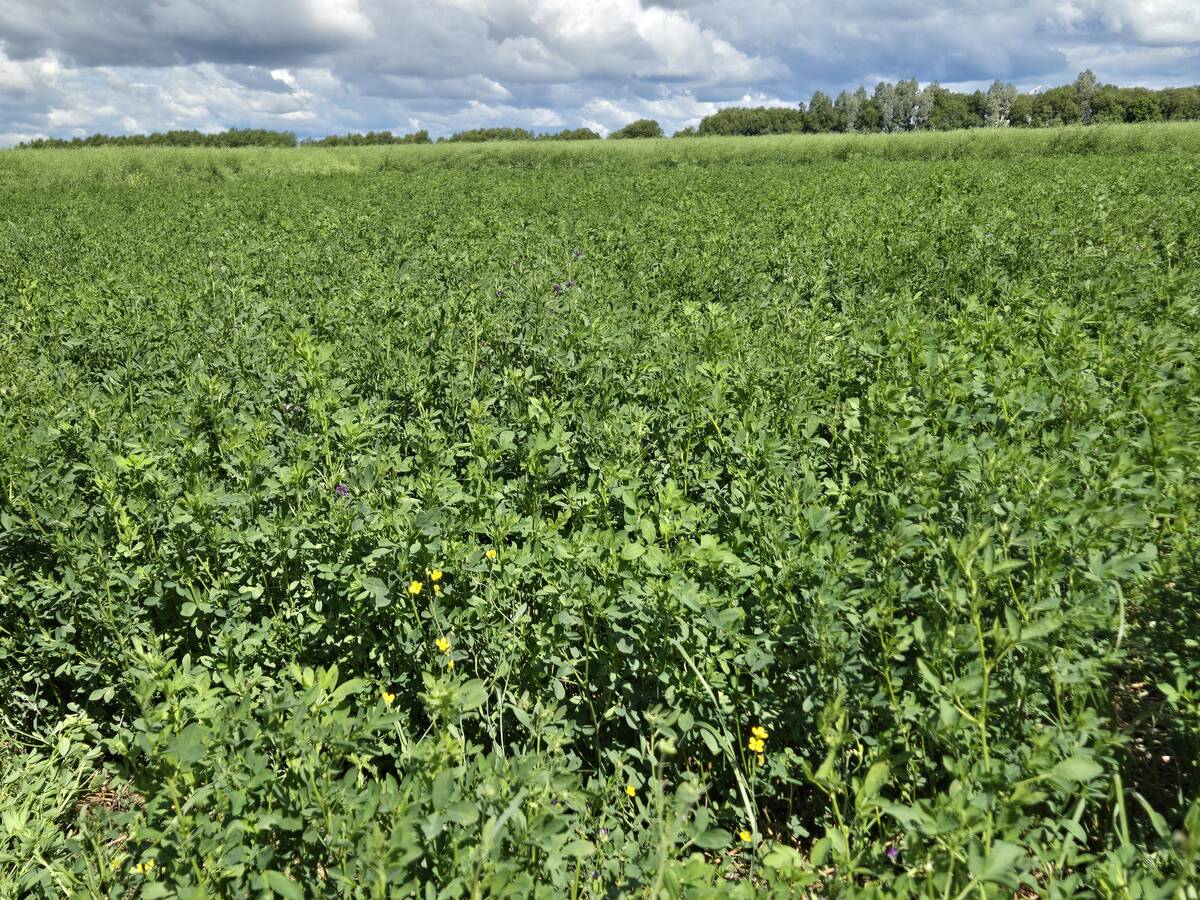CAROLINE, Alta. – Five mountain pine beetles can kill a mature pine tree.
The little black beetle has affected more than 21 million acres of pine forest in the interior of British Columbia and is moving east.
The Alberta government formed a mountain pine beetle advisory committee last year to try and ward off the beetle before it inflicts the kind of damage seen in B.C., which now has large swaths of orange coloured and dead trees.
On April 11, Alberta declared a state of emergency over the province’s forest health, which allows the province to use money from its $7 billion sustainable emergency fund. The government also plans to ask Ottawa for additional money.
Read Also

Manitoba Parkland research station grapples with dry year
Drought conditions in northwestern Manitoba have forced researchers at the Parkland Crop Diversification Foundation to terminate some projects and reseed others.
Last year, 19,000 trees were identified and cut or burned as part of the province’s control measures.
This year another three to four million trees are expected to show signs of infection, said forester Trisha Stubbings of the provincial sustainable resource development department.
Early damage has been spotted in the Fox Creek, Whitecourt, Blairmore and Canmore areas. Last year the beetles travelled 200 kilometres farther east than expected because of jet stream winds, Stubbings told a meeting of the Rocky Riparian Group in Caroline.
“What will happen to these populations will be dependent on the winds in the middle of July when the adult beetles emerge from the trees.”
Stubbings warned that the damage could spread to shelterbelts and yards. There is no compensation for lost trees.
The beetle’s range has spread because of milder winters that aren’t producing the freezing temperatures needed to kill the insects.
Adult beetles prefer mature trees 50 to 120 years old. About 70 percent of Alberta’s pine trees are in that class.
“Tree resistance to pine beetles decreases significantly after age 65,” Stubbings said.
Beetles burrow into a tree and lay eggs. The larvae overwinter and appear to have their own natural antifreeze so they can handle low temperatures.
The larvae eat under the bark, leaving a J-shaped trail of damage. They pupate and later come out as adults in July and August to restart the cycle.
Woodlot specialist Toso Bosic of Alberta Agriculture said the loss of large tracts of trees may result in more spring flooding and summer drought because there is nothing to hold the water.
It could also cause local climate change and considerable economic loss. About 2.5 percent of the province’s gross domestic product was derived from forestry in 2005.
Residents are asked to monitor their trees and call 310-BUGS toll free if they suspect an infestation.

















